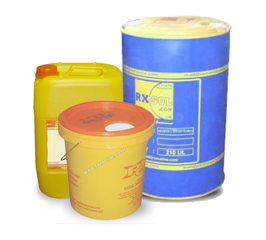Alphabets Search
Product Search
Categories
- --None--
- Agriculture-94
- Air Lines-36
- Asphalt Release / Products-90
- Automobiles-41
- Ballast Tank Chem-23
- Boiler Chemicals-42
- Carbon Coal Charcoal-26
- Clean Air deodorizer-24
- Construction Chem-67
- Coolant Glycol Antifreeze-27
- Cooling Water Chemical-43
- Corrosion Inhibitor-44
- Deck cabin galley Maintenance-25
- Degreaser-10
- Detergent & Soap-12
- Drain Clean Products-29
- Drilling Fluids & Mud Oil Field chemicals-81
- Electrical Cleaner-30
- Engine room Maintenance-16
- Evaporator Treat-51
- Floor Care ( Polish / Cleaner ) -13
- Foundry Ind Chemicals-54
- Fuel Treatment-70
- Gasses-66
- GREASES-92
- Hand Wash / Personal care-14
- Hold Solution-22
- House / HOTEL & CATERING-15
- Lab Chemical-60
- Lab Equipment-61
- Laundry Chemicals-26
- Leather Chem-96
- Medicine-95
- Metal Treatment-68
- Oil Spill Chem & Accessory -17
- Paint and Cleaning solvent-18
- Passivation-38
- Power Plant / Heavy Industries-37
- Pump & Accessory-21
- Radiator and AC coil cleaner-39
- Railway Maintenance-35
- Raw Chemicals-19
- RIGS Oil Field-34
- RO Chemicals-33
- Rubber Chemicals-93
- Rust Clean & Protect-28
- Safety Item-64
- Scale Remover-11
- Sewage Chemicals Treatment-40
- Stains Indicator Reagents-69
- Swimming Pool & Spa-31
- Tank Cleaner-20
- Test Kit For Water-62
- Textiles / Looms-91
- Wall Wash Test Kit-63
- Water Filter, Vessel, Softner, Accessory-32
- Water Treatment-40
- Wrench & Tools-65
Calcium Chloride Prills
The chemical formula of calcium chloride is CaCl2, and its molar mass is 110.983 g/mol. It is an ionic compound.
50.00Kg Granules
Product Description
Product Technical bulletin
Calcium chloride dehydrated
Product Number C4901
Store at Room Temperature
Replacement for Product Number 38,315-5
Product Description
Molecular Formula: CaCl2
Molecular Weight: 111.0
CAS Number: 10043-52-4
Calcium chloride is a commonly used reagent in biochemistry. Calcium plays important roles in many biological processes, including signal transduction, muscle contraction, and maintenance of cell membrane and cell wall stability.1,2 Extensive reviews of the experimental measurement of biological calcium have been published.3,4
Calcium chloride is used in the preparation and transformation of competent E. coli and in the transfection of eukaryotic cells with either plasmid DNA or high molecular weight genomic DNA.5 The CaCl2-mediated electroporation of E. coli with the plasmid DNA pBR322 has been studied.6 A protocol for the concentration of virus vectors that uses CaCl2 has been published.7
CaCl2 has been used in the stabilization and twodimensional crystallization of the NADH-ubiquinone oxidoreductase (complex I) from Escherichia coli.8 The crystallization of porcine pancreatic elastase in the presence of CaCl2 in the presence of sodium citrate reveals binding of calcium in the metal binding site of the protein.9 The effect of CaCl2 on the total fluorescence in the polymerication of the tubulin-like FtsZ division protein of Escherichia coli has been studied by a multiwell fluorescent assay.10
Precautions and Disclaimer
For Laboratory Use Only. Not for drug, household or other uses.
Preparation Instructions
This product is soluble in water (100 mg/ml), yielding a clear, colorless solution.
References
1. The Biological Chemistry of the Elements, Frausto da Silva, J. J. R., and Williams, R. J. P., Clarendon Press (Oxford, UK:
991), pp. 268-298.
2. Williams, R. J. P., in Calcium as a Cellular Regulator, Carafoli, E., and Klee, C., eds., Oxford University Press (New York,
NY: 1999), pp. 3-27.
3. Cellular Calcium: A Practical Approach, McCormack, J. G., and Cobbold, P. H., eds., IRL Press (Oxford, UK: 1991).
4. Calcium Signaling Protocols, Lambert, D. G., ed., Humana Press (Totowa, NJ: 1999).
5. Molecular Cloning: A Laboratory Manual, 3rd ed., Sambrook, J., and Russell, D. W., Cold Spring Harbor Laboratory Press
Cold Spring Harbor, NY: 2001), pp. 1.116-1.118, 16.14-16.26.
6. Xie, T. D., et al., Study of mechanisms of electric field-induced DNA transfection. I. DNA entry by surface binding and
diffusion through membrane pores. Biophys. J., 58(1), 13-19 (1990).
7. Pham, L., et al., Concentration of viral vectors by co-precipitation with calcium phosphate. J. Gene Med., 3(2), 188-194
(2001).
8. Sazanov, L. A., et al., A role for native lipids in the stabilization and two-dimensional crystallization of the Escherichia coli
NADH-ubiquinone oxidoreductase (complex I). J. Biol. Chem., 278(21), 19483-19491 (2003).
9. Weiss, M. S., et al., Metal binding to porcine pancreatic elastase: calcium or not calcium. Acta Crystallogr. D Biol.
Crystallogr., 58(Pt 9), 1407- 1412 (2002).
10.Trusca, D., and Bramhill, D., Fluorescent assay for polymerization of purified bacterial FtsZ celldivision protein. Anal.
Biochem., 307(2), 322-329 (2002). GCY/RXR 5/06
Product label

Request for Quote and Get Heavy Discount on Price

